The temple dedicated to Goddess Kali was shielded by mighty deodars that soared heavenward as though in search of the divine. We had stumbled on this magical little temple on our way to Ranikhet in the Kumaon region of Uttarakhand. The heavily garlanded idol exuded a sense of power as well as serenity.
Childless women conceived when they turned to the Goddess for help; sickly children grew strong and robust like the deodars nearby and adulterous spouses realised the folly of their wanton ways when dragged to the Goddess by an aggrieved mate, related a priest at the temple.
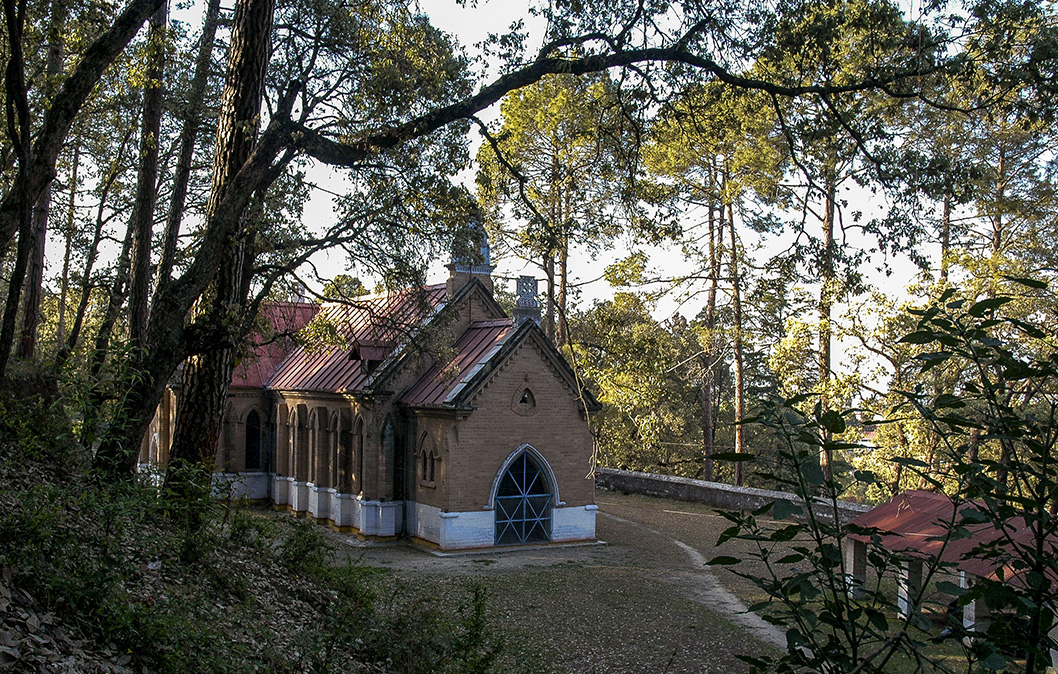
We wanted to linger, for the temple had filled us with a spiritual sense of well-being but Ranikhet beckoned. We had left Kausani fairly early that morning, careening down vertigo-inducing roads that coiled around the vast bellies of mountains, some cloaked in forests, others mantled by terraced mustard fields. The occasional truck driver hurtled past us, down narrow ravine-hugging roads, while slate-grey rivers, swollen with snow-melt, kept us company for a part of the way.
Sylvan getaway
Our car zipped down roads, shielded by trees brushed in shades of green, gold and rust and occasionally daubed with the blood-red hues of rhododendron flowers. In the distance, small hamlets seemed to wobble on mountain ledges while the occasional green field added an aura of lush fertility to the landscape.
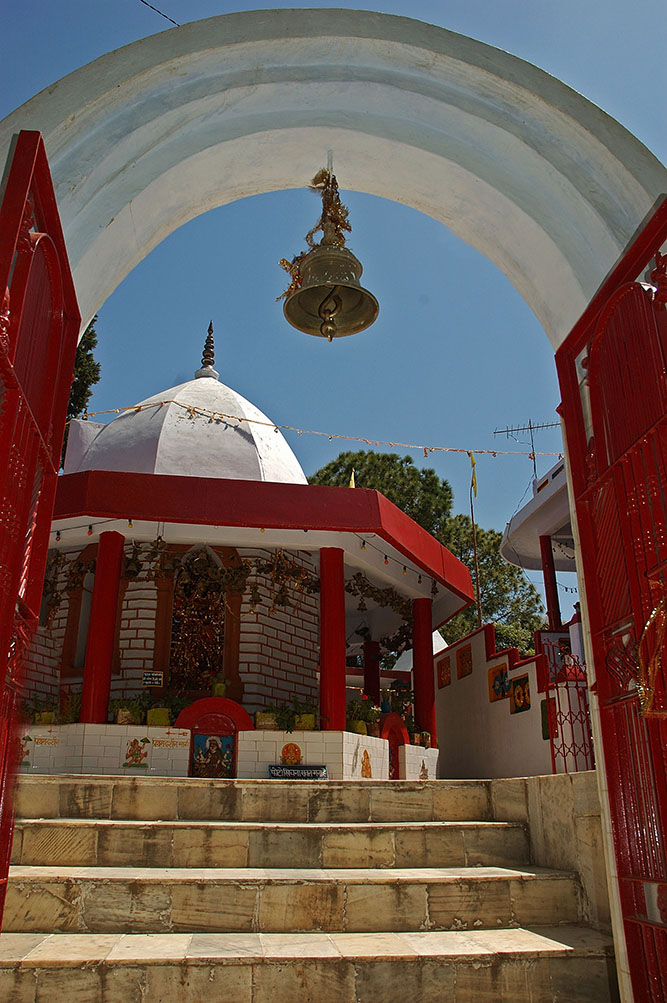
We arrived in Ranikhet, located 1,830 m above sea level, shaded by arrow-straight pine trees, with the jagged peaks of the Himalayas forming a backdrop in the distance. Sprawling across a forested ridge, the picturesque locale was discovered and developed by the British in 1869. The hill station with its grand Himalayan vistas floored Lord Mayo, the then Viceroy of India, who seriously contemplated shifting the army headquarters from Shimla to Ranikhet. Even today, we discovered after a two-day stay, Ranikhet is alluring, with its wide open spaces, a high altitude golf course and long enchanting walks in the surrounding forests. The Kumaon Regimental Centre at the heart of vast lush grounds also houses a museum and a memorial.
For us, our trip to Ranikhet was calibrated to nostalgia, for we were returning to this sylvan getaway after a gap of 40 years, having been there as children. And while much has changed, there are parts of Ranikhet where Father Time is a stranger and has not managed to sneak in. In the old days, Ranikhet was the place one headed to, in order to ooh and aah at the Himalayas as they rose in snowy splendour at dawn when a timorous sun would brush the peaks a shade of pink and then gild them with gold. That was the time when Almora, Chaukori and Munsiyari were not part of the traveller’s lexicon.
During our recent stay, the Himalayas coyly hid behind veils of mist, but Ranikhet still exudes a sense of intimacy with nature and untouched beauty. Part of its many charms are undoubtedly the weathered churches, and sprawling Raj bungalows where we could feel and touch the legacy of the Raj. In the charming bungalows with their pitched red-tiled roofs, shielded by soaring pines, probably lie buried many a tale of intrigue and skulduggery that happened in that era. Most have a patch of garden out front, and some have been repurposed and function as elegant country house hotels. The 119-year-old Rosemount Ranikhet hotel, for instance, has been restored with great sensitivity, its warm wood-panelled interiors glow in the light of crackling fireplaces. Its café au lait façade basks golden in the evening sun, and splendid lawns with wrought iron garden furniture make viewing the Himalayas a treat there.
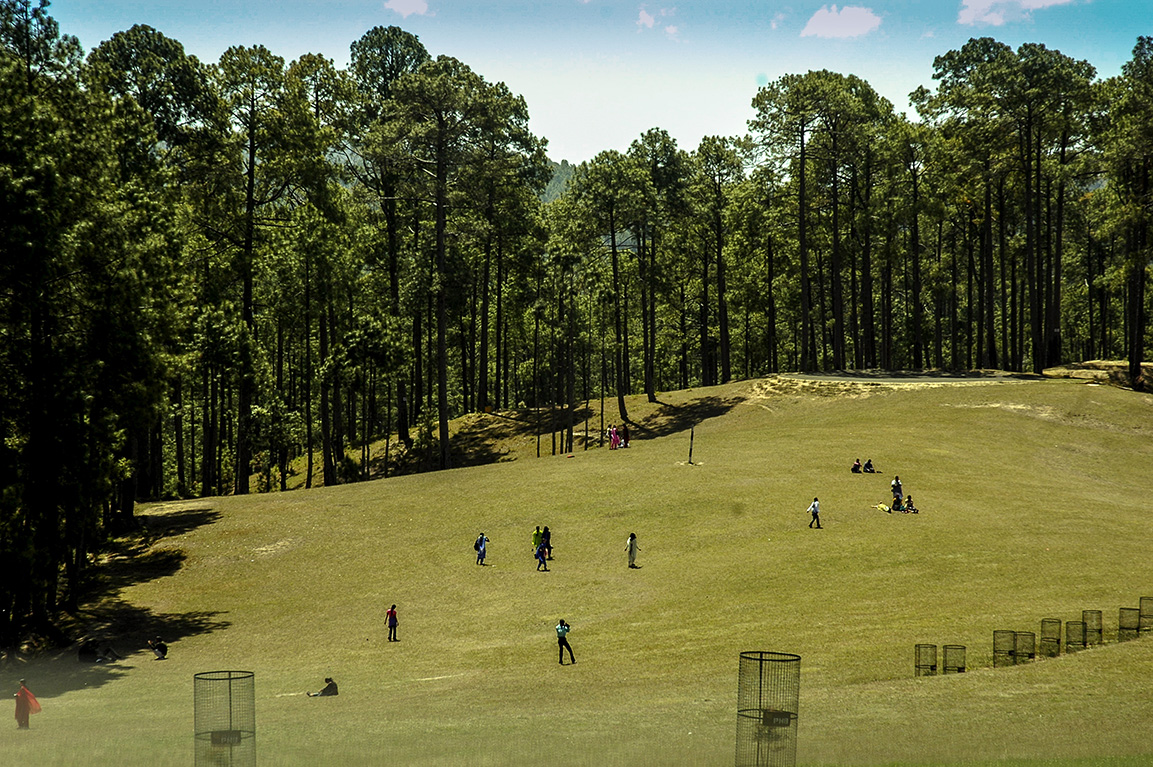
Deep, mysterious forests
One of the undeniable pleasures of Ranikhet are walks in a forest when birds with multi-hued plumage flutter overhead, while pine trees tall as totem poles from some pantheon of forest gods needle the sky. (for highlight) Locals exercising their dogs of indeterminate breed (all hill dogs look handsome with their fur-like coats) cast warm smiles our way.
In contrast to the green tranquil landscape is the undulating bazaar, a-swirl with colour and awash with wonderful buys fashioned by local craftsmen – tribal jewellery, local woollens, brass lamps and candles… Nearby, two old churches have been converted into boutiques with hand-operated looms where one can buy bright spangled shawls and tweed material.
This miniscule hill resort, virtually un-ravaged by time’s heavy hand, has an aura of spirituality too… It has ashrams like the Anandpuri Ashram, described “as a place of spiritual purification, healing and education based on the teachings of Shri Babaji”, embraced by many gurus in the region.
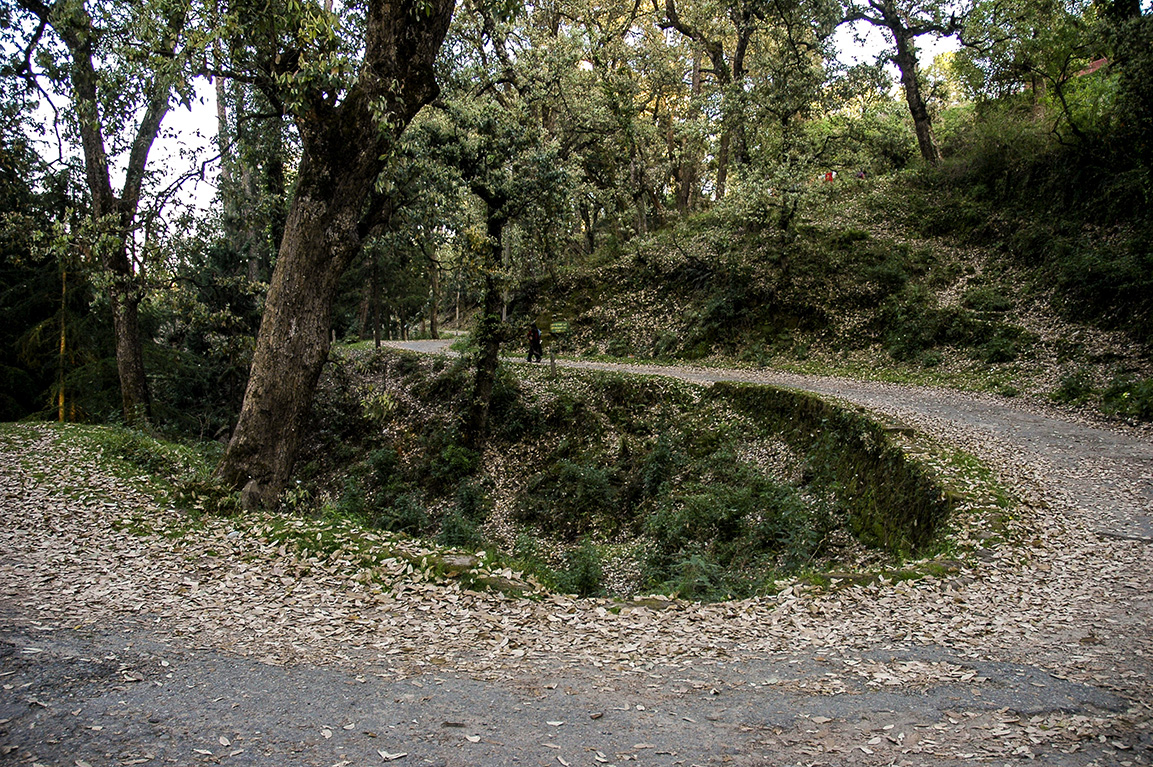
We did not have the time to embark on walks and long treks in Ranikhet though we would have loved to linger and explore unknown hidden terrain; and stop to smell the mountain flowers. The tinkling of bells in the Jhula Devi temple beckons visitors to step inside, to meditate and feel the deep peace that swathes this ancient house of worship. And the Chaubatia orchards, full of fruity bounty, are also within walking distance, south of the main Mall Road of Ranikhet. Another pretty place is the artificial lake of Bhaludham, where we picnicked with some cucumber sandwiches, pastries and fresh fruit.
That evening we sat by a crackling fireplace, warming our chilled fingers, happy that Ranikhet had borne the weight of history so well and had repelled the onslaught of modernity. We recalled a legend told to us by a local, of a Kumaoni queen Rani Padmini. The Rani was enchanted with the mountains and green glens of a tiny hill hamlet and requested her king, Raja Sukherdev, to build her a grand palace there.(highlight) They then named it Ranikhet or queen’s meadow. The palace has vanished but the place continues to enchant tourists in search of a serene escape; wayfarers explore the deep forests of wonder and mystery and hike down the mountain trails to stumble on scenes that resemble a painting by John Constable.
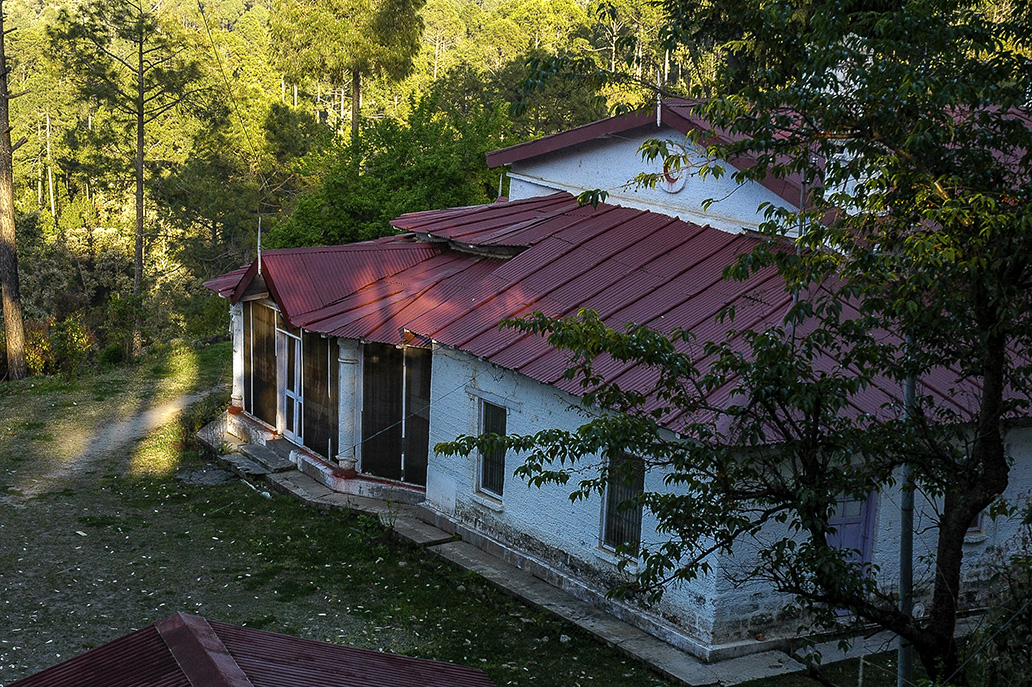
Fact File
Ranikhet is a year-round destination but March-April are good months to visit as also the months of October and November when the snow-mantled peaks preen with unfailing regularity for the visitor.
There are lots of excursions that one can embark on, to picnic spots in the area.
By way of accommodation, there are the Kumaon Mandal Vikas Nigam (an arm of Uttatakhand Tourism) properties, Rosemount Ranikhet (part of the Chevron group of hotels), Trishul Lodge, Majhkhali (on the outskirts of Ranikhet), West View Hotel (in a pine grove) and a number of other options as well.
Contact: Kumaon Mandal Vikas Nigam Ltd, at: www.kmvn.org

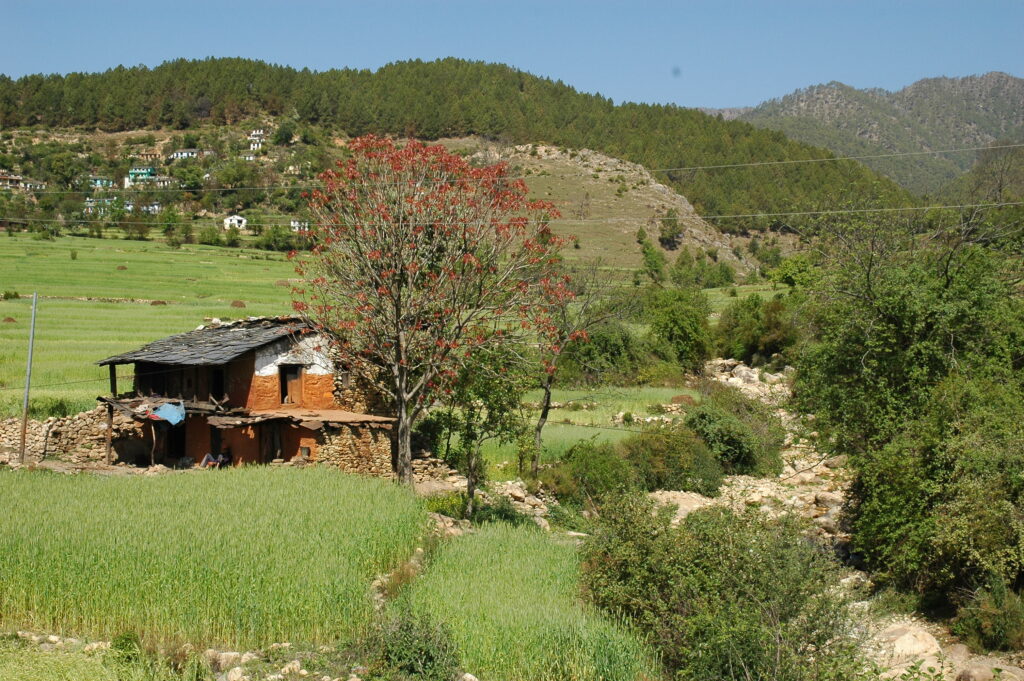
 [/column]
[/column]